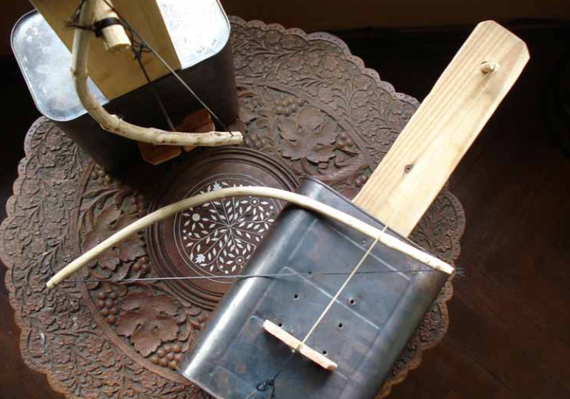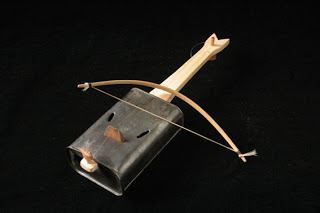N’vike
Bowed Instruments
America
Between 1001 and 1900 AD
Video
The N’vike is a distinctive bowed string instrument that holds a significant place in the musical traditions of the indigenous Toba people of the Gran Chaco region in South America. This unique instrument not only serves as a medium for musical expression but also acts as a cultural artifact that reflects the rich heritage and history of its creators. In this blog post, we will delve into what the N’vike is, its historical origins, how it works, its types and features, the kind of music it produces, and its overall significance within its cultural context.
The N’vike, sometimes referred to as novike or n’vique, is a traditional bowed string instrument primarily associated with the Toba people of Bolivia and Argentina. It is characterized by its simple yet effective design, typically made from materials readily available in its native environment. The instrument consists of a hollowed-out wooden body that serves as a resonator, with one or more strings stretched across it. The strings are played with a bow, producing a sound that is both melodic and rhythmic.The N’vike’s construction often involves local woods and materials, making each instrument unique to its maker. The Toba people have historically used this instrument in various aspects of their cultural practices, including ceremonies, storytelling, and social gatherings. Its sound is described as warm and resonant, capable of conveying deep emotions and connecting listeners to the cultural narratives of the Toba people.
History of the N’vike
Origin
The N’vike has its roots in the Gran Chaco region of South America, an area that spans parts of Bolivia and Argentina. This region is home to several indigenous groups, including the Toba people, who have inhabited these lands for centuries. The exact origins of the N’vike are somewhat obscure due to limited historical documentation; however, it is believed to date back several centuries, possibly to the 17th or 18th century. The Toba people have traditionally relied on their environment for sustenance and cultural expression. The N’vike emerged as a response to their social and spiritual needs, serving not only as a musical instrument but also as a tool for storytelling and community bonding. As with many indigenous instruments, the N’vike has evolved, influenced by both internal cultural shifts and external factors such as colonization and globalization.
How the N’vike Works?
The N’vike operates on principles similar to other bowed string instruments. Its sound production relies on vibrating strings that resonate within its hollow body. Typically made from animal gut or synthetic materials today, these strings are tensioned across a wooden bridge that elevates them above the body of the instrument.To play the N’vike, musicians use a bow made from horsehair or synthetic fibers. The bowing action causes the strings to vibrate, producing sound waves that resonate through the body of the instrument. Players can manipulate pitch by varying finger placement on the strings while bowing. This technique allows for expressive melodies and harmonies characteristic of traditional Toba music.
Types of N’vike
While there may not be distinct “types” of N’vikes in terms of classification like some other instruments (e.g., violins vs. violas), variations exist based on size, string number, and construction materials. Some common distinctions include:
Standard N’vike: Typically features two or three strings; used for traditional folk music.
Modern Adaptations: Newer versions may incorporate synthetic materials or additional strings for versatility in contemporary music settings.
Cultural Variants: Different communities may have slight variations in design or playing style based on local traditions.
These variations reflect both individual craftsmanship and regional influences within Toba culture.
Features of the N’vike
Kind of Music Composed
The music produced by the N’vike encompasses a wide range of styles deeply rooted in Toba traditions. It is often characterized by:
Folk Songs: Many pieces are narrative-driven, telling stories about daily life, nature, or historical events.
Ceremonial Music: Used during rituals and celebrations to invoke spiritual connections or commemorate significant events.
Dance Music: Accompanies traditional dances within community gatherings or festivals.
Improvisational Elements: Musicians often incorporate improvisation into their performances, allowing for personal expression while maintaining cultural integrity.
The versatility of the N’vike enables it to adapt to various musical contexts while preserving its traditional essence.
Significance of the N’vike
The N’vike holds deep cultural and spiritual significance among the Bamiléké people of Cameroon. Beyond its role as a musical instrument, it is viewed as a sacred tool used to connect the living with the spiritual realm. The N’vike is primarily used in rituals, ceremonies, and festivals, where it serves as a means of communication with ancestors and spirits. Its rhythms are believed to carry messages that transcend the physical world, enabling the Bamiléké to honor their ancestors, seek guidance, or invoke blessings.
In initiation ceremonies, the N’vike marks important life transitions, such as the coming-of-age of young people or the ascension of leaders within the community. The drum’s deep, resonant sounds are thought to invoke ancestral protection and ensure the success of these significant rites. Additionally, it plays an essential role in social cohesion, as its beats help unify the community during celebrations and collective activities. The N’vike is more than just an instrument of entertainment; it is a symbol of the Bamiléké’s identity, heritage, and continuity, and it underscores the deep spiritual connection the people maintain with their past.
FAQ
What materials are N'vike musical instruments made of?
N'vike musical instruments are traditionally crafted from natural materials such as wood, animal skins, and bamboo. These elements reflect the indigenous communities' connection to nature and sustainability. Modern versions may incorporate metals and synthetic materials for durability. The materials used influence the instruments' tone and resonance.
What kind of music is played with N'vike instruments?
N'vike instruments are primarily used to play traditional folk music that celebrates cultural heritage and communal events. The music often involves rhythmic patterns and melodious tunes that convey stories and emotions. These instruments are also used in ceremonies and rituals. Their versatility makes them integral to both festive and sacred occasions.
What are the main types of N'vike musical instruments?
The main types of N'vike musical instruments include stringed instruments like lyres, percussion instruments such as drums, and wind instruments like flutes. Each type serves a specific purpose in musical ensembles. They range from solo performance instruments to those creating rhythmic foundations in group settings.
 Links
Links
References
Other Instrument
Categories



















